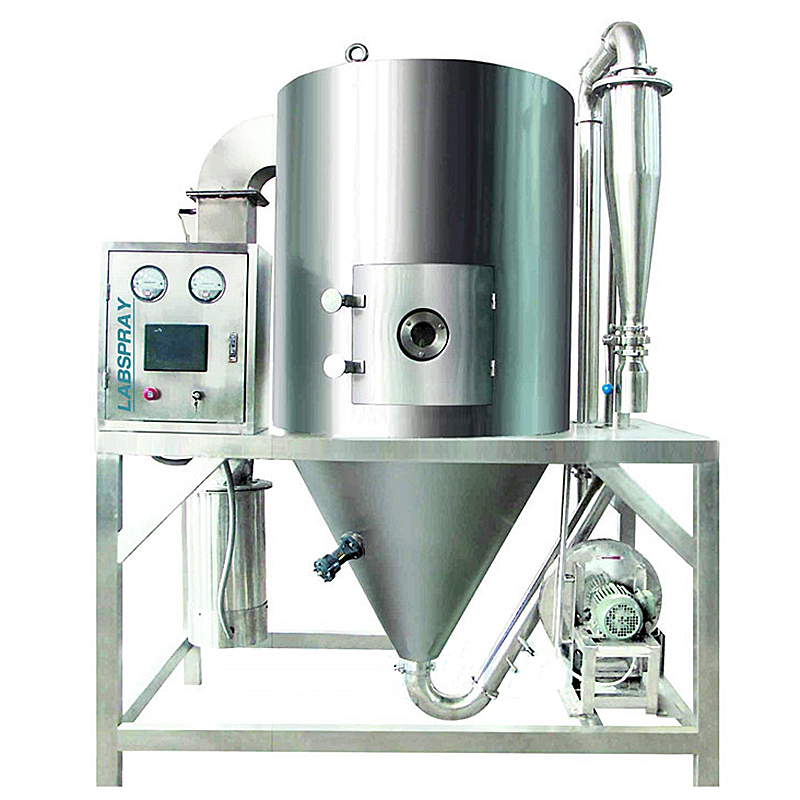
Industrial drying equipment: optimization of material drying processes
Industrial drying equipment plays an important role in various manufacturing and processing industries by removing moisture from bulk materials, powders and granular materials to improve product quality, reduce transportation costs and improve process efficiency. Some of the most commonly used drying technologies include rotary dryers, fluid bed dryers, and spray dryers, each with unique benefits and applications. In this article we will take a closer look at these drying systems and their role in industrial processes.
1. Rotary dryers:
Rotary dryers are widely used in industries such as agriculture, chemicals and mineral processing to dry bulk materials, sludges and granular materials. These dryers consist of a rotating drum or cylinder heated by direct or indirect heat sources to evaporate moisture from the material. Key features and benefits of rotary dryers include:
- Versatility: Rotary dryers can process a wide range of materials, including minerals, ores, agricultural products and municipal waste, making them suitable for a variety of industrial applications.
- Continuous Operation: Rotary dryers provide continuous drying, delivering high throughput and efficient moisture removal from large volumes of material.
- Even Drying: The rotating drum design of rotary dryers ensures uniform heating of the material, resulting in consistent drying performance and product quality.
- Heat Source Flexibility: Rotary dryers can be heated using a variety of energy sources, including natural gas, propane, steam and electricity, providing flexibility in choosing the most cost-effective and environmentally friendly option.
- Customizable Design: Rotary dryers can be customized with features such as air pattern, air seals and insulation to optimize drying performance and meet specific process requirements.
2. Fluid bed dryers:
Fluid bed dryers are used in industries such as pharmaceuticals, food processing and chemicals to dry powders, granules and agglomerates. These dryers use a layer of hot air or gas to fluidize and suspend material particles, promoting efficient heat and mass transfer for rapid drying. Key features and benefits of fluid bed dryers include:
- Gentle Drying: Fluid bed dryers provide gentle drying conditions that minimize product degradation and ensure even drying of sensitive materials such as pharmaceuticals and foods.
- Rapid Heat Transfer: The fluidization process in fluid bed dryers promotes rapid heat transfer between the drying medium and the material, reducing drying time and increasing productivity.
- Precise Temperature Control: Fluid bed dryers allow precise control of drying temperature and air flow, providing optimal process conditions for a variety of materials and moisture content.
- Batch and Continuous Operation: Fluid bed dryers are available in batch and continuous configurations, providing flexibility in selecting the most appropriate operating mode based on production requirements and space constraints.
- Integrated Process Features: Fluid bed dryers can be equipped with additional process features such as cooling, granulation and coating to optimize production processes and reduce equipment footprint.
3. Spray dryers:
Spray dryers are widely used in the food, dairy and chemical industries for drying liquid or slurry raw materials into powders or granules. These dryers work by atomizing the feed material into small droplets, which are then quickly dried with hot air or gas in a large drying chamber. Key features and benefits of spray dryers include:
- High Capacity: Spray dryers have high capacity, making them suitable for large-scale production of powdered products such as milk powder, instant coffee and laundry detergents.
- Particle Size Control: Spray dryers provide precise control of the particle size and morphology of the product being dried, allowing manufacturers to achieve desired powder characteristics and performance properties.
- Efficient Moisture Removal: The atomization process of spray dryers creates a large surface area for evaporation, allowing for effective moisture removal and rapid drying of the feed material.
- Versatile Applications: Spray dryers can be used for a wide range of applications, including drying heat-sensitive materials, encapsulating flavors and nutrients, and producing fine powders with controlled properties.
- Energy Recovery Options: Spray dryers can be equipped with energy recovery systems, such as heat exchangers and cyclone separators, to optimize energy efficiency and reduce operating costs.
Conclusion:
Industrial drying equipment, including rotary dryers, fluid bed dryers and spray dryers, play a critical role in various manufacturing and processing industries by removing moisture from bulk materials, powders and granules. Each drying technology offers unique benefits and applications, allowing manufacturers to optimize drying processes, improve product quality and improve operational efficiency. By understanding the capabilities and features of various drying systems, industrial operators can select the most suitable equipment for their specific production requirements and achieve optimal results in their work.






